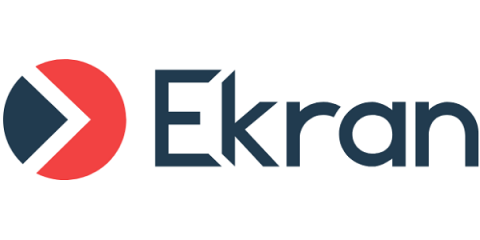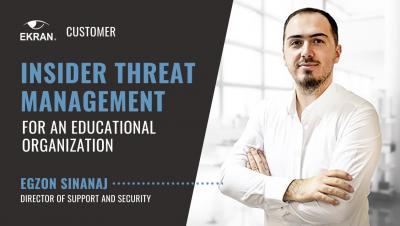Security | Threat Detection | Cyberattacks | DevSecOps | Compliance
Ekran
People-centric Security for Remote Workers
Insider Threat Management for an Educational Organization
Law Firm Data Security Compliance: Protecting the Confidentiality Of Personal Data
Lawyers constantly handle sensitive data that attracts hackers and malicious insiders. Every security breach leads to reputational losses, remediation costs, and penalties. That’s why cybersecurity at law firms is regulated by strict IT laws and requirements. Complying with all necessary requirements and implementing protection measures that fit your organization is challenging.
Cybersecurity Breaches Caused by Insiders: Types, Consequences, and Ways to Prevent Them
Security incidents are often hard to detect and tend to go unnoticed for far too long. They’re also time-consuming to investigate, since gathering evidence and correlating facts may take months or even years. For instance, the graphic design website Canva became aware of the theft of user credentials for almost a million accounts only seven months after the actual incident. That’s why it’s better to put your effort into preventing incidents rather than handling their consequences.
How to Pass an IT Compliance Audit
IT compliance requirements are designed to help companies enhance their cybersecurity and integrate top-level protection into their workflows. But passing an IT security audit can be challenging. Complex requirements, constant changes in standards and laws, and audit processes, and a high number of required security procedures are the key challenges of maintaining compliance. The way out is with careful preparation and smart planning.
4 Steps to Ensuring Efficient Cybersecurity Monitoring in US Educational Institutions
Education is a strictly regulated industry in which robust cybersecurity protection is a must. Data breaches can cost a fortune for schools and universities, since the loss of students’ personal information and other critical data brings reputational damage alongside fines for regulatory non-compliance. In the US in 2019 there were 348 publicly disclosed K-12 school-related cybersecurity incidents — triple the number in 2018.
Increase Employee Productivity with User Activity Monitoring
High employee productivity is vital for your business’s success. Yet only 34% of US employees are engaged with their work (and 13% are actively disengaged) according to a 2018 poll by Gallup. But the productivity of even the most engaged employees tends to decrease over time. Workers require constant support to stay productive. This is especially important when dealing with remote employees, as they aren’t within their manager’s eyesight and have lots of domestic distractions.
Legal Risks and Recommendations for Employee Workplace Surveillance in the US
Monitoring employees is one way to ensure a productive and secure workflow within an organization. However, not all employees like being watched. Some even challenge the ethics and legality of workplace surveillance. In this article, we explore the nature of workplace surveillance and consider the laws US employers should know and follow if they want to monitor their employees.
Why You Need a Just-in-Time Approach to Privileged Access Management
Privileged access is granted to certain users so they can perform their work. Yet admin and service accounts often are the causes of cybersecurity incidents since they allow their owners to install and remove software, modify system configurations, and more. Even with privileged access management practices in place, malicious actors can continue to find new ways to compromise your sensitive data. However, a new just-in-time PAM approach promises to improve the situation.



